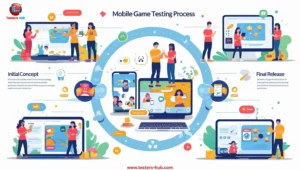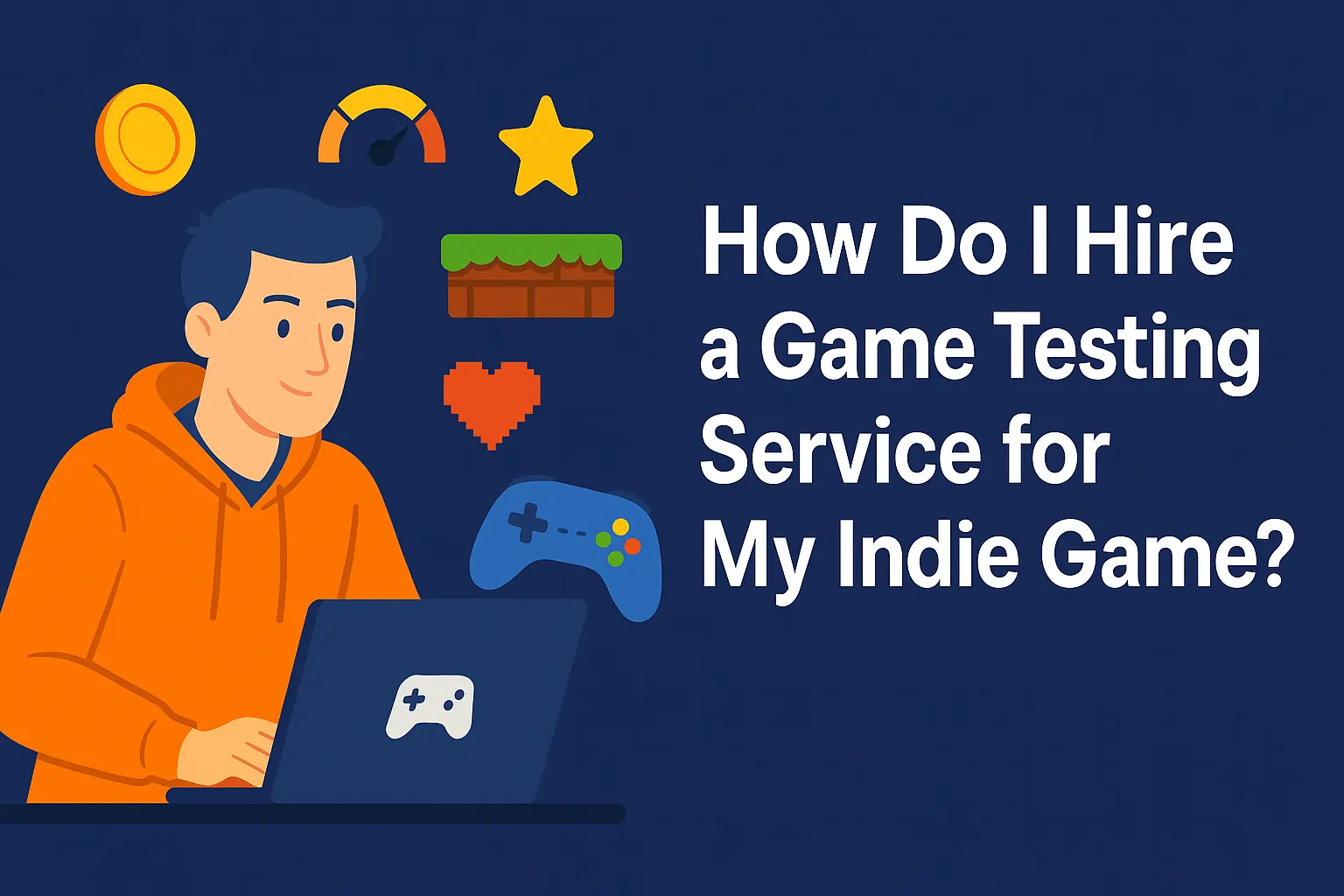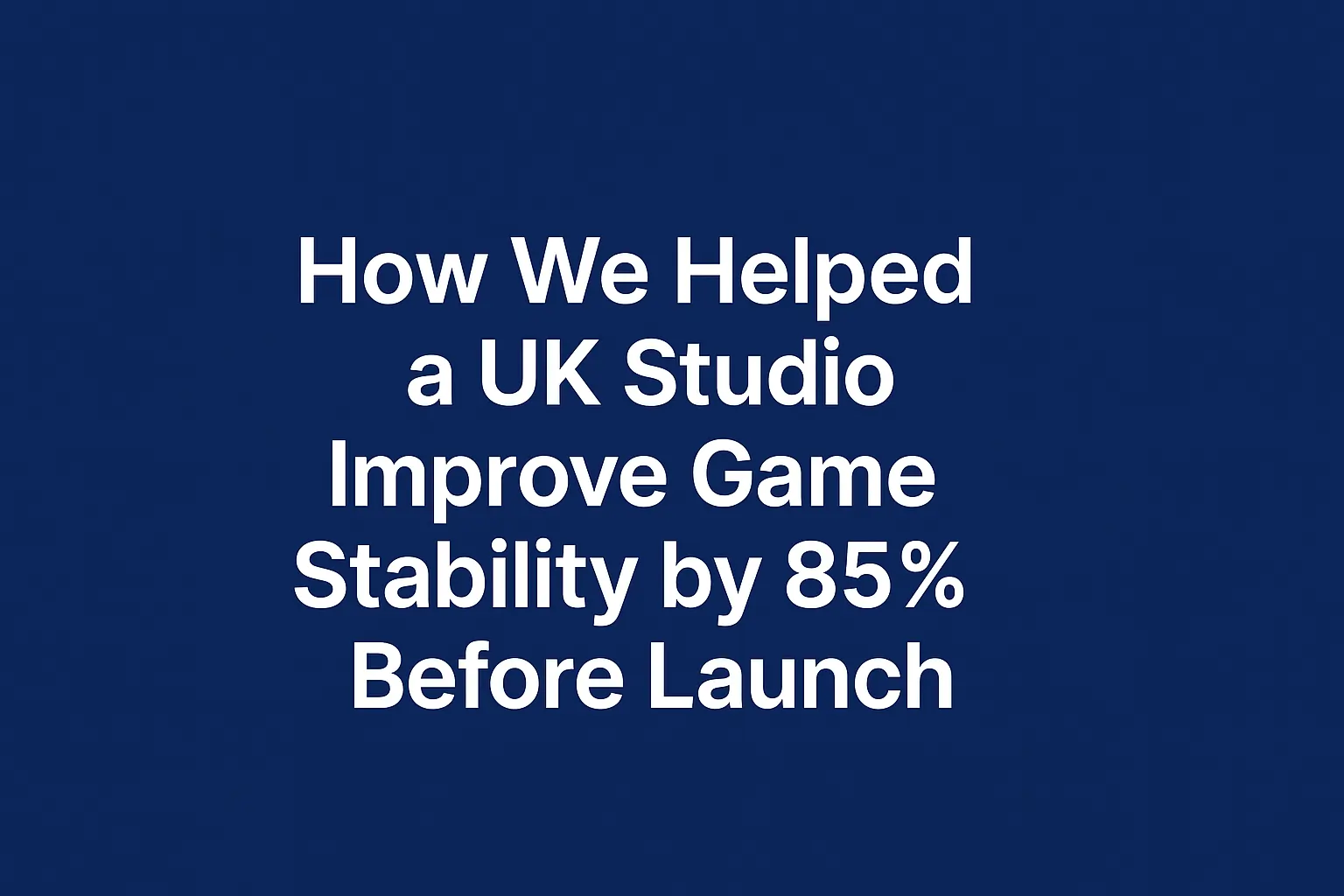Mobile Game Testing in Unity vs Unreal Engine: What QA Teams Should Know
Picking the right engine is only part of the process when creating mobile games. The approach you take towards playtesting the game and identifying bugs depends on whether it’s created in Unity or Unreal Engine. While they are both established engines, they operate very differently, and you’ll have to adapt your quality assurance plan to accommodate that. The testing plan that works in Unity may not work in Unreal, and vice versa.
In this blog, we’re going to discuss the main differences in testing, performance differences to consider, and useful QA tips to make sure your game is functioning as intended, regardless of the engine!
🎮 Unity vs Unreal Engine: Why This Matters for QA
Unity and Unreal continue to dominate the development space for mobile games; however, they are different types of games:
- Unity is the most common engine for 2D games, hyper-casual games, and mid-core games. It’s a lighter-weight engine, very flexible, and is easy to integrate solutions with various platforms, with very little coding required.
- Unreal Engine is better suited for 3D-heavy and visually rich games, most commonly role-playing games and more realistic action games that require very high fidelity and where real-time rendering is imperative to the overall experience.
Considering that these engines differ in how their rendering, scripting and logic are managed, your QA teams will have to test while considering those technical differences.
👉 Are you planning a mobile game launch?
🧪 Testing Mobile Games Built with Unity: What to Consider for QA
Unity is incredibly versatile and allows for speedy development; however, there are some testing considerations. Many mobile games built with Unity rely heavily on asset bundles, UI scaling, and game logic through scripts that can result in bugs under certain conditions.
What to Test in Unity Mobile Games:
- Asset loading issues: Review if the bundles load during a poor network, and if any assets fail to display and/or crash the game.
- UI updates: Elements that render correctly on the screen do not create issues in one device may render differently on smaller or larger devices. QA must validate that the elements do not overlap and position is correct between devices.
- Gameplay logic issues: Because Unity uses C#, many issues are often related to bugs caused by game logic not firing correctly, or race conditions are common. Exploratory testing may help in revealing these edge cases.
- Delayed or Out of Sync Animations: Physics-based animations may unsynchronize when run on different devices, especially if there are different frame rates.
✅ Are you launching a game in Unity soon? We can test your game-
🕹️ Testing Unreal Engine Mobile Games: Essential QA Considerations
Unreal Engine games place significant demands on mobile hardware. They have visual depth and highly sophisticated lighting systems that all contribute to a greater chance of performance problems as you move down in specifications on mobile, especially mid- to low-tier devices.
What Should QA Consider for Unreal Games?
- Frame per second drops and GPU strain: You should check frame rates and thermal behaviour, especially in high-load scenes.
- Shader and lighting validation: Validate whether there are any visual discrepancies and whether rendering is issue-free across platforms.
- Blueprint logic testing: Unreal’s visual scripting system (Blueprints) requires extensive validation of the flow of the game and for movement between game states.
- Memory consumption and start times: Because of their asset-heavy builds, you should test cold starts, loading of levels and background recovery on each device.
✅ Need to book performance QA of your Unreal Engine game –
🔄 Common QA Practices for both Engines
While Unity and Unreal focus on different aspects of development, many of the QA practices are the same for both engines:
- Compatibility of Devices: Always test with a variety of low, medium, and high-end Android/iOS devices.
- Touch and Gesture testing: Test all user touch gestures across all screen sizes and device versions.
- Multiplayer/Network: Simulate low-bandwidth, high-latency, and syncing disruption.
- In-app Purchases and Ads: Ensure your monetisation flows the same way in every region and SDK version.
✅ Looking for real device testing with over 50+ mobile models?
⚙️ QA Toolkits: Unity vs Unreal
Engine |
Recommended QA Tools |
Common Testing Focus |
| Unity | Unity Profiler, Charles Proxy | UI scaling, logic scripting |
| Unreal | GameBench, Unreal Insights | FPS, memory, and rendering layers |
Both engines benefit from manual + automated testing, but the balance depends on the game complexity and release cycle.
📊 Real Life Examples from Our QA Team
Unity Example:
A mobile puzzle game seemed to be working fine in the simulators, but showed overlapping menus on small-screen Androids. The game had undergone manual UI testing, but ultimately, the pain points with the layout were discovered and identified before launch.
Unreal Example:
A multiplayer first-person shooter (FPS) encountered noted frame drops while playing on mid-range phones. However, following our performance testing and guidance, the team was able to redact the light sources and ultimately improve the overall frame stability by 30%.
These examples are actual cases of the quality assurance role of engine-aware QA improving video game experience and, therefore, player enjoyment!
🚀 In Conclusion: One Game, Two Engines, Two QA Pathways
Regardless of your studio’s engine, the success of your mobile game demands more than incredible development work. Targeted QA is essential because without it, engine-specific bugs, layout glitches, and performance problems can enter production and ruin your user ratings.
Testers HUB builds mobile game testing strategies for your engine, game type, and player base. Our testing lab supports 50+ Android and iOS devices to ensure quality gameplay from start to finish.
🎯 Want your Unity or Unreal game to launch without bugs?
FAQs – Mobile Game Testing In Unity vs Unreal Engine
Q1. Why does mobile game testing vary between Unity and Unreal Engine?
Unity’s lightweight and C# based scripting creates bugs for UI scaling and logic, where Unreal pushes the GPU with 3D advanced visual fidelity, as it can take time to performance profile. Because of these differences, our QA teams have to decide on a case-by-case basis how they will test on the engine.
Q2. Which engine is harder to test for mobile games – Unity or Unreal?
It depends on the complexity of their game. Unity has a much greater chance for UI and logic bugs with lots of testing needed, while for Unreal, you can typically see clear bugs, but also need to heavily performance check your game and validate its visuals. Testing Unreal is usually more intensive on the resources involved due to bigger builds and rendering in real-time.
Q3. What tools are typically used to test Unity and Unreal mobile games?
For unity they typically use Unity Profiler / Charles Proxy / Emulators of the device. For Unreal QA teams typically use GameBench / Unreal Insights / a profiling performance tool on their device for testing. Both engines implement manual testing – on real devices.
Q4. Can automated testing be done on both Unity and Unreal Engine mobile games?
Yes, but with caveats. Unity tools and integrations allow automated unit tests and UI tests, perhaps more easily than Unreal, which will require either a custom test harness or some third-party frameworks. While automated testing can be helpful, automated testing is best reserved for regression testing, while exploratory testing designed to catch UI/UX bugs, still remains essential.
Q5. What is important for Unity and Unreal Engine mobile games testing on real devices?
Emulators can’t emulate the real experience. They miss real-world problems like eref rendering bugs, out-of-memory crashes, errors, and soap-specific device input/task_hook glitches. There is a promise that as long as our product runs on an emulator in terms of screen sizes, OS versions, form factors, etc., it will work as advertised on any real device. Nothing can be more critical than Android fragmentation.
Q6. How does testing for multiplayer Unity and Unreal Engine games differ?
Unity is often unshackled, or affiliated with one of the many third-party solutions, or is programmed with Photon SDKs. In these situations, whether configuration fixes (sync validation) are incorporated and latency simulations either help or hinder test results. In contrast, when using Unreal Engine, while there are built-in tools for multi-player, there needs to be stricter testing thresholds because there can be more complex server-client dependency logic and real-time rendering happening in the background.
Q7. Are separate QA strategies necessary for Android and iOS versions of Unity or Unreal games?
Yes. Regardless of a common codebase the bugs that appear on platforms connected with input behaviour, memory limits, app store compliance, and network permissions will be presented on both platforms. The QA team will need to treat the testing of each platform independently to expose these issues.











